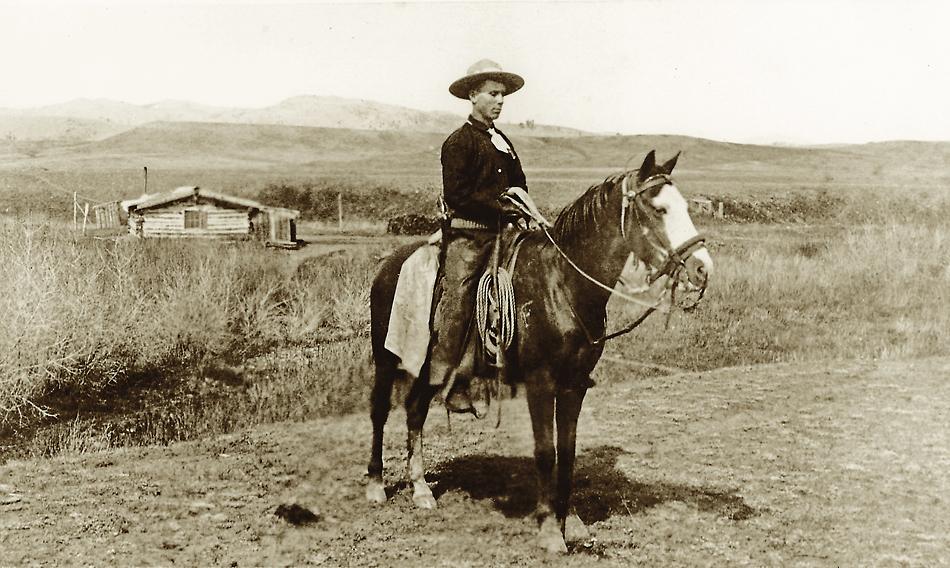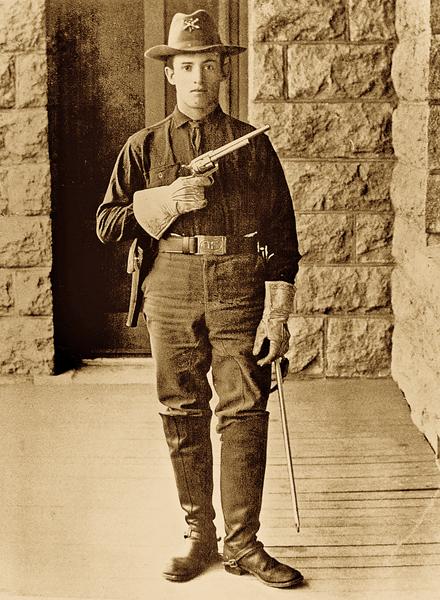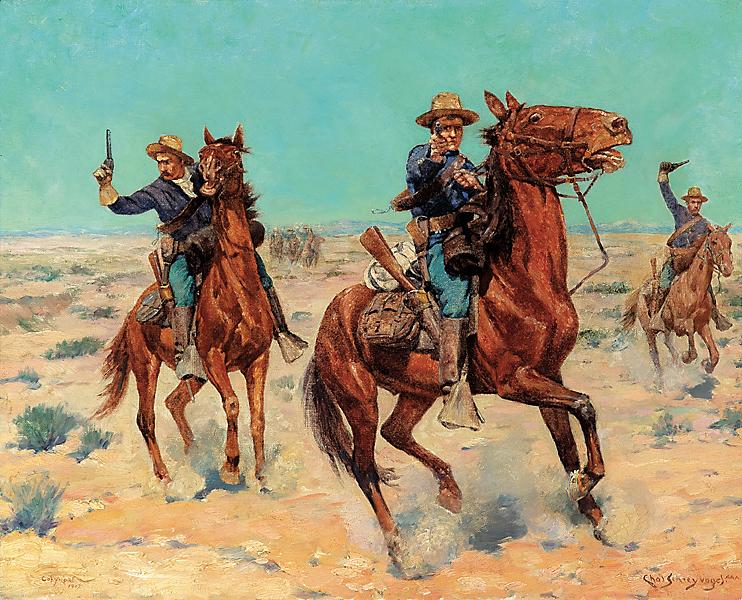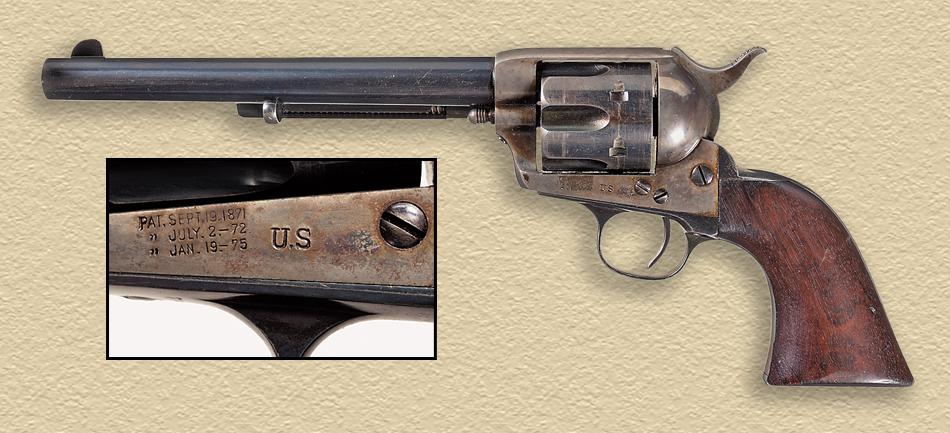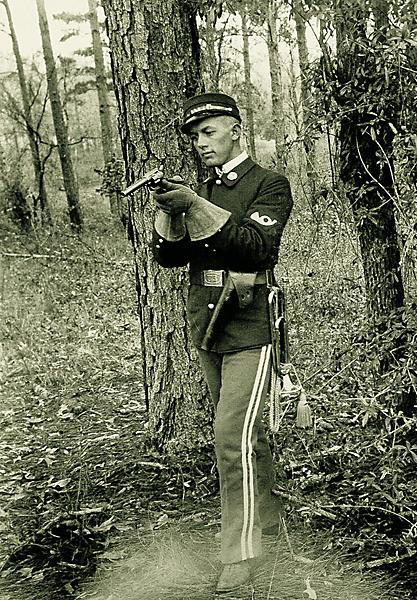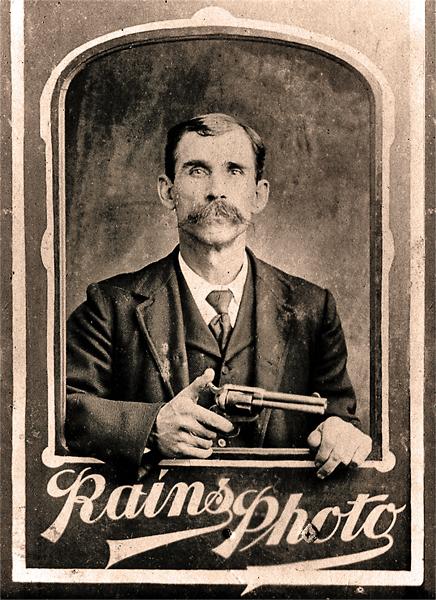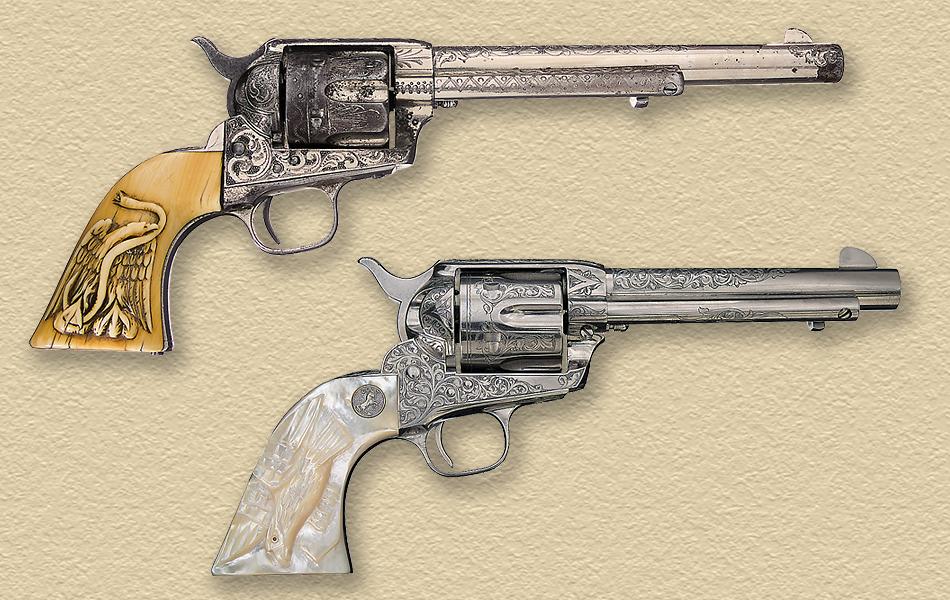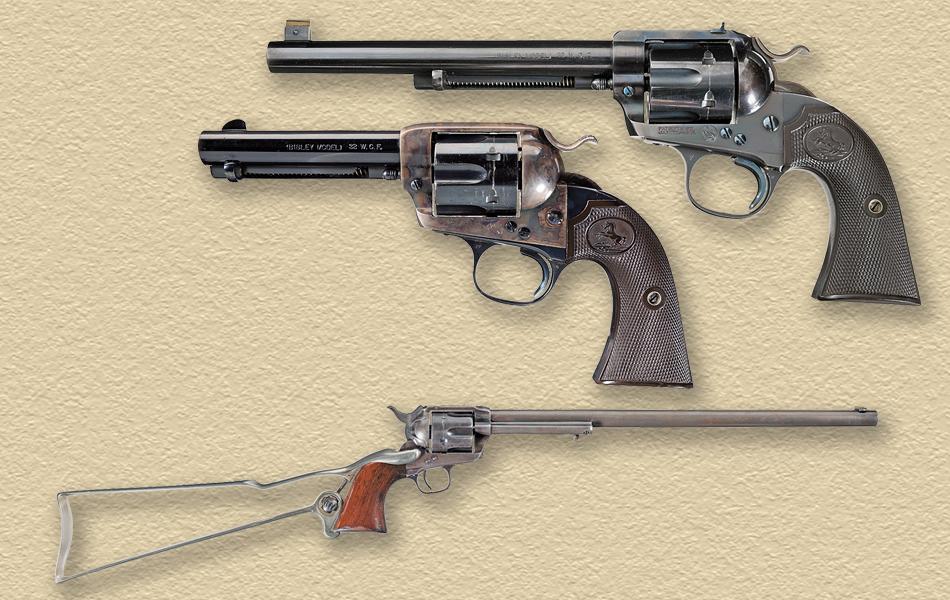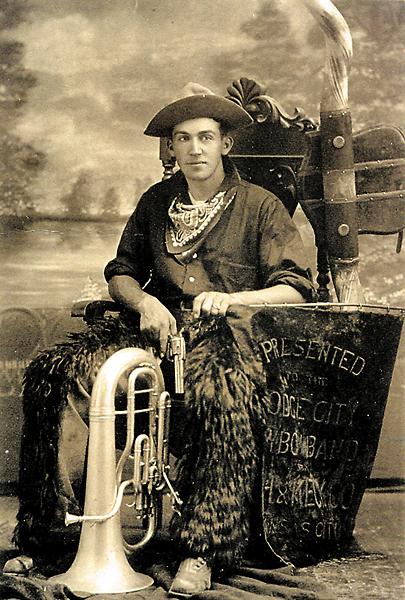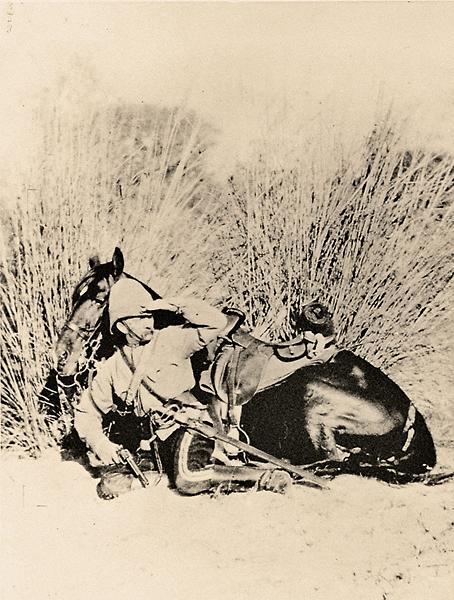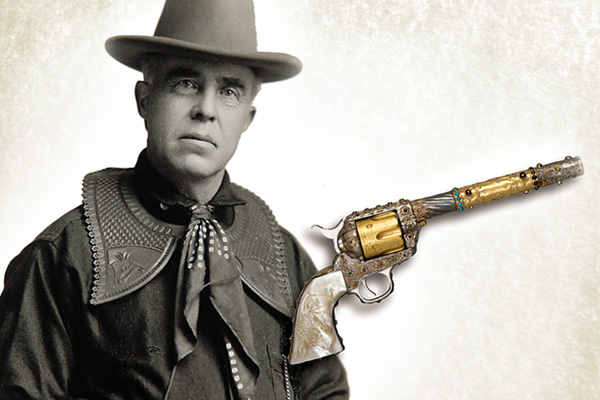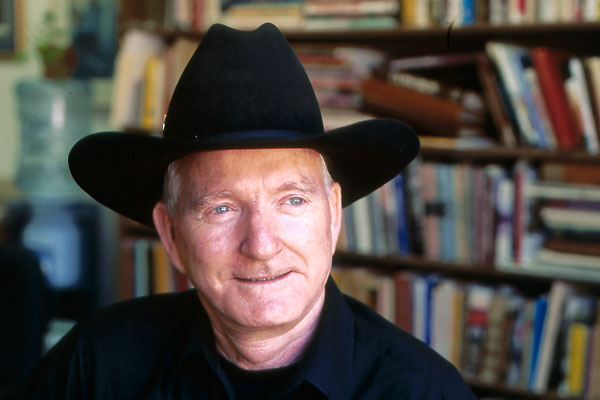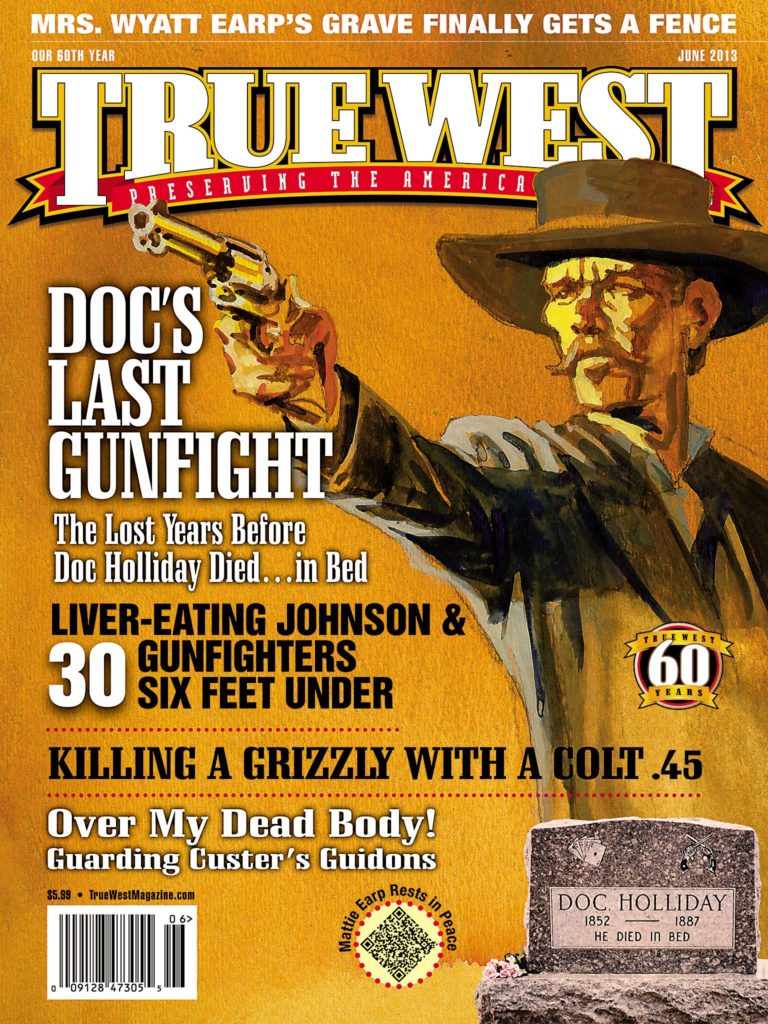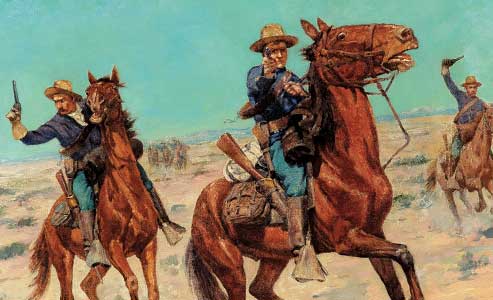 Colt Peacemaker. Just the sound of these words conjures up images of the Wild West. They bring to life scenes of bustling smoke-filled saloons and dusty frontier streets, of thundering cavalry pistol charges across wide-open prairies and of great cattle herds and the hard men who drove them to lusty, lawless railheads like Abilene or Dodge City.
Colt Peacemaker. Just the sound of these words conjures up images of the Wild West. They bring to life scenes of bustling smoke-filled saloons and dusty frontier streets, of thundering cavalry pistol charges across wide-open prairies and of great cattle herds and the hard men who drove them to lusty, lawless railheads like Abilene or Dodge City.
Names from the real West, like Wyatt Earp, Wes Hardin and Bat Masterson, also come to mind, as do names from the West of myth, like Buffalo Bill Cody, John Wayne and Roy Rogers. Even later historic figures, including Gen. George Patton and Texas Ranger Frank Hamer, were famous users of the Colt Single Action Army. Produced from 1873 through 1940, these are the guns collectors call First Generation Colts.
A true original that has stood the test of time, the First Generation Colt has laid the foundation for an entire replica industry, all around the world. Even more, it inspired the Western sports of Fast Draw, Cowboy Action Shooting and Cowboy Mounted Shooting.
Through its use in movies, television and novels, the Peacemaker has become the most recognizable six-gun in history. It could have easily gone the way of the wheellock and arquebus, if not for the popularity of Westerns on American TV, which inspired Colt to reintroduce this 19th-century “Equalizer,” almost unchanged from its frontier days.
The Birth ofthe Peacemaker
The story of the 1873 Colt Single Action Army begins in 1872, when the Hartford, Connecticut, firm issued its first large-frame, self-contained metallic cartridge revolver, the .44 caliber Model of 1872, which collectors call the “1871-1872 Open Top.” The factory had produced metallic cartridge conversions of earlier percussion revolvers, yet Colt’s Open Top Model was a totally new revolver and is thus considered the parent revolver of the legendary Colt Single Action Army.
While producing its Model of 1872, the firm was developing a solid frame pistol. By November 1872, its “Strap Pistol” had pretty much taken on the classic look of the now famous Colt Single Action Army. The factory sent specimens to the U.S. Army Ordnance Department for testing against a government service revolver, the Smith & Wesson American.
Colt sent samples chambered to take the .44 Smith & Wesson Russian cartridge, even though it could also handle the .44 Colt, then in use in Colt “Richards” conversion revolvers the military had. Retired Gen. W.B. Franklin, Colt’s vice president, felt the Army would prefer the .44 Russian, which had proved superior to the .44 Smith & Wesson American round.
Yet in order to conduct its tests, the military required both revolvers to have the .44 American chambering. The Colt was returned to the factory to be rechambered. After several months of testing, designers increased the bore diameter to 0.45 of an inch. Finally, on July 23, 1873, the last signature was added to the first U.S. Government contract for Colt’s Single Action Army revolvers.
The contract called for the delivery of 8,000 revolvers and appendages, which consisted of one screwdriver per pistol, at a price of $13 each. These first government-purchased revolvers were the basis for the classic Peacemaker, with its 7½-inch blued barrel, trigger guard, back strap, ejector housing and color-casehardened frame. Throughout its 140-year history, the Colt Single Action Army has undergone several evolutionary minor changes, yet has remained essentially the same as those produced in 1873.
In the American West, this powerful and reliable handgun served as the official sidearm of the U.S. Cavalry during much of the Indian Wars, as well as the relied-upon tool of shootists from both sides of the law and a constant companion to cowboys, hunters and outdoorsmen.
Between 1873 and 1890, the government purchased 37,060 Colt Single Actions. Although Colt designed its Single Action Army for the cavalry, little more than half purchased saw service in that mounted arm. The remainder was divided among the infantry and artillery, state militia units, the Treasury Department, U.S. Post Office and other government agencies.
Several months passed before the guns could be manufactured, inspected, shipped and issued to troops. The cavalry was the first branch of service to receive the new revolvers. On December 15, the U.S. Chief of Ordnance took delivery of the first shipment. Soon after, under the order of the Secretary of War, the Single Action Army revolvers were ready for shipment to the troops. The first 2,000 revolvers were forwarded to the Leavenworth Arsenal for rearming the 6th and 10th Cavalries. The government also issued the new 1873 Springfield .45-70 carbines to these units.
Thundering Cavalry Charges
The Colts met immediate success with horse soldiers on the frontier, and many officers, as well as some non-commissioned officers, tried to purchase them. Lacking the authority to sell arms from a U.S. arsenal to enlisted men,
the government forwarded such letters to Colt’s Patent Fire Arms Co. in Hartford.
During the turbulent 1870s-80s, the cavalry relied on the Peacemaker. Smith & Wesson Schofields, improved version of the earlier-issued Americans, served as secondary-issue sidearms. Most cavalrymen preferred the Colt, even though the Smith & Wesson was a more finely engineered arm. The Schofield’s main advantage was the ease and speed by which a mounted trooper could extract spent cases and reload again. Its major drawbacks were the small grip size and short hammer spur, which did not lend itself to rapid cocking.
All too often in a mounted melee, troops needed to quickly reload their pistols, even if they had not spent the loads. The Colt’s single ejection and reloading system adapted perfectly to this task, whereas the Smith & Wesson might either eject its contents—fired and unfired—or, worse yet, hang up on a live round that had not cleared the cylinder ejector.
The Colt Single Action Army remained the standard-issue sidearm of the cavalry until the early 1890s, when the government’s thinking leaned toward the .38 caliber, double-action revolvers.
Soldier TradeCreates Market
Although Colt created the first ’73 Colts for the military, the civilian market was not far behind. In 1873, the firm produced a small quantity—possibly 500—of the Single Action Army for the civilian trade.
In the West, soldiers who “lost” their Colts were paid handsome sums by eager civilians. Recognizing the demand, by the mid-1870s, Colt was turning out its Peacemakers in .45 Colt for civilians. It also released 1,863 .44 Rimfire models to civilians from 1875 to 1880.
Westerners from both sides of the law, from Texas Rangers, Arizona Rangers and Wells Fargo stage drivers to the Dalton and James-Younger Gangs, chose this rugged and easy-handling smokewagon as their personal sidearm. Each man, good or bad, knew the value of a straight-shooting, powerful revolver that could withstand the rigors of frontier life, and their choice of armament should not be taken lightly.
The Colt was better balanced than its competitors. The .45 Colt round was the most powerful commercially-loaded handgun cartridge of its day (up until the advent of the .357 Magnum in the 1930s). As with the military, the simplicity of its few working parts made it a
natural choice for someone living a rugged lifestyle.
The .45 Colt impressed even the famed English big-game hunter Sir Samuel Baker, a cartridge innovator himself, having experimented with loads that revolutionized big-game hunting. In 1881, while Baker was hunting the Big Horn mountain range of Wyoming, one of his guides killed a grizzly bear with a single shot from a .45 Colt. The beast was shot between the shoulders, and the bullet passed through its heart. Baker was so impressed that, he noted, “Upon my return to England, I immediately purchased a similar revolver of Messrs. Colt and Co.—the long frontier pistol, .450 bullet.”
The civilian market was responsible for calling Colt’s new Army revolver “Peacemaker.” B. Kittredge & Co., a major dealer of Colt’s firearms in Cincinnati, advertised Colt’s strap pistol as the Peacemaker as early as October 1874. The moniker stuck and remains the Single Action Army’s most oft-used nickname.
Competing with Winchester
In 1877, Colt introduced the Single Action Army in .44 Winchester Central Fire (.44-40). Within a few months, J.P. Moore’s Sons, a large Colt dealer in New York City, decided to sell the centerfire caliber as the “Frontier Six-Shooter.”
Colt recognized this as a great selling point. After a small initial run of
.44-40s featuring plain barrels and a trigger guard stamped with a caliber designation, Colt sold the rest with “Frontier Six-Shooter” etched to the side of the barrel in early 1878. Around 1889-90, the legend was roll stamped onto the barrel. Today, 19th-century Colts bearing this unique etching bring a premium with collectors.
Colt introduced the .44-40 to ward off competition from Winchester, which was considering adding a revolver to its firearms line, not to complement that firm’s 1873 centerfire repeating rifle, reports Don Wilkerson, in his excellent study, The Official Record of the Colt Single Action Army Revolver 1873-1895.
Regardless, within the next several years, the .38-40 and .32-20 chamberings (also developed by Winchester) were added to Colt’s line, in 1886 and 1888 respectively. This interchangeability of ammunition between the rifle and handgun increased Colt’s popularity immensely. Men who had to travel vast stretches of untamed land could now carry the same ammunition for both firearms. Although the .44-40 and the .38-40 rounds are scoffed at today as lackluster and underpowered, a great many frontiersmen considered them to be among the better medium-powered hunting loads of the day. They ate, fought and survived with these loads!
From 1882 to 1887, the .45 Colt and the .44-40 calibers dominated production, even though the Single Action Army was eventually made in 36 different chamberings. The .45 Colt was by far the most commonly produced bore size, with an estimated 60 percent made in this caliber, while the .44-40 commanded around 25 percent. Roughly 10 percent of the guns manufactured went to the .38-40, with the remaining five percent divided up among the other chamberings.
Peacemaker Production Milestones
When first introduced, and for nearly a decade after, one-piece walnut stocks were standard on the Single Action Army—oiled for the military and varnished for civilians. Scholars guess that Colt introduced hard rubber grips in late 1881 or early 1882. These black checkered, two-piece grips are now referred to as “eagle” grips because of the U.S. eagle and shield found on the stock. Colt discontinued these in 1893 (some Colts shipped as late as 1896 have the eagle), in favor of the “Rampant Colt,” which eliminated the eagle motif.
Although wood stocks continued to be used on military revolvers throughout the contract period, wood stocks began to lose favor with civilians in 1885. By 1890, wood grips were relegated as “special order” and hard rubber stocks became standard fare.
The next milestone in the Peacemaker’s production was mid-1896. Around serial number 164,100, the method of holding the cylinder base pin was changed on the standard-framed Single Action from a screw in the forward section of the frame to a spring-retained screw-headed lock on each side of the frame. Colt had already used this method as early as 1877, with its “self cocking” (double action) .38 “Lightning” and .41 “Thunderer” models, the 1878 Double Action “Omnipotent” and 1893 Target Model revolvers. With the exception of special runs of blackpowder frames in modern times, this cylinder base pin system has continued to the present.
After making its early Colts out of iron, Colt spent years developing frames sturdy enough for use with the then-new smokeless powder. Although guns in the 165,000 range feature the so-called “smokeless powder” frames, the firm did not officially guarantee its revolvers for use with smokeless powder until the 180,000 serial number range. Given that, collectors call First Generation Colts manufactured from 1873-96 “Blackpowder” Colts and those made during 1896-1940 “Pre-War.” Colts between 164,100 and 180,000 serial ranges are “Transitional Blackpowder” models.
The Single Action’s basic configuration has remained unchanged with two notable exceptions: the “Flattop Target” model and the “Special Target” model.
The Flattops, introduced around 1888, were the top of the line of the Single Action Army series, with their special target sights and standard frame. Even so, their popularity was short lived, with only around 925 produced.
The greatly improved Special Targets surpassed the Flattops in sales after they were shipped to Colt’s London Agency. Due to some spectacular performances at the famous target matches held at England’s Bisley Range, Colt officials renamed its Special Target the “Bisley.”
Colt made its Bisley in both standard frame and flattop, in a variety of calibers, including popular target chamberings of the day. The Bisley gained special favor with sportsmen and adventurers in the American Southwest and Mexico. Until 1915, Colt manufactured
44,350 standard-frame Bisleys and 976 flattop Bisleys.
The turn of the 20th century was a busy time at the Colt facilities, with still a few frontiers left to be conquered and target shooting quite the rage, both at home and abroad. Of the approximately 357,869 Single Actions manufactured by Colt before 1940, about 40 percent of them were turned out in a 15-year period from the mid-1890s to around 1911.
Death of the Hogleg?
From 1912 through 1940, Colt saw its Peacemaker sales steadily wane. Double-action revolvers and powerful semi-automatic pistols dominated the handgun scene. Production of the famed hogleg, from 1930 on, numbered in the hundreds. In 1940, Colt discontinued its First Generation Colt line. This proud warhorse of the Old West looked doomed to become a mere relic of the past.
With the popularity of TV Westerns, Colt felt encouraged to reintroduce its Peacemaker in the mid-1950s.
Colt continues to produce this classic Wild West six-shooter, having attracted new and enduring fame…but that’s another story.
Phil Spangenberger has written for Guns & Ammo, appears on the History Channel and other networks, produces Wild West shows, is a Hollywood gun coach and character actor, and is True West’s Firearms Editor.
Photo Gallery
– All images courtesy Phil Spangenberger Collection unless otherwise noted –
– Courtesy Coeur d’Alene Art Auction –
– Courtesy Rock Island Auction Company –
– Courtesy Herb Peck Jr. Collection –
– Courtesy Rock Island Auction Company –
– Courtesy Rock Island Auction Company –
– Courtesy Lee Silva Collection –


